Ragusa is a meaty Euro game from Braincrack Games and designer Fabio Lopiano. Players are developing the titular city, generating the precious commodities of the day, trading, importing and developing the city walls. Be careful though – every time you do something to benefit yourself, you’ll be helping your rivals. Plenty of tricky decisions to make then, let’s take a closer look.
Ragusa is set in the 15th Century, and pits any number from one to five players in action against one another. You’d be forgiven for looking at the box, the photographs, and even the description, and thinking it’s a city-builder game. Indeed, this is the blurb from Braincrack Games’ website:
The game tasks players with building the city, its walls, and making use of its growing economy to find their fortunes!
Make no mistake though, this is a worker-placement game. It’s just wearing a big fake glasses, nose and moustache disguise, and pretending to be a city-builder. But hey, I’m a Euro game fan through-and-through, so this is par for the course. I just want you to understand from the outset what Ragusa is, and isn’t.
Hex appeal
The game board is divided up into a series of hexes. The hexes in the middle of the board have six building spaces – one on each corner, and those around the outside of the board have three spaces. Every building spot touches three hexes, and a player’s turn is as simple as picking up one of their 12 buildings and placing it on an unoccupied spot, then generating the resources and taking the actions depicted on those touching hexes. Congratulations, you now know how to play Ragusa!
That was simple, right? Not on your nelly, mate, decision making in Ragusa is tough.
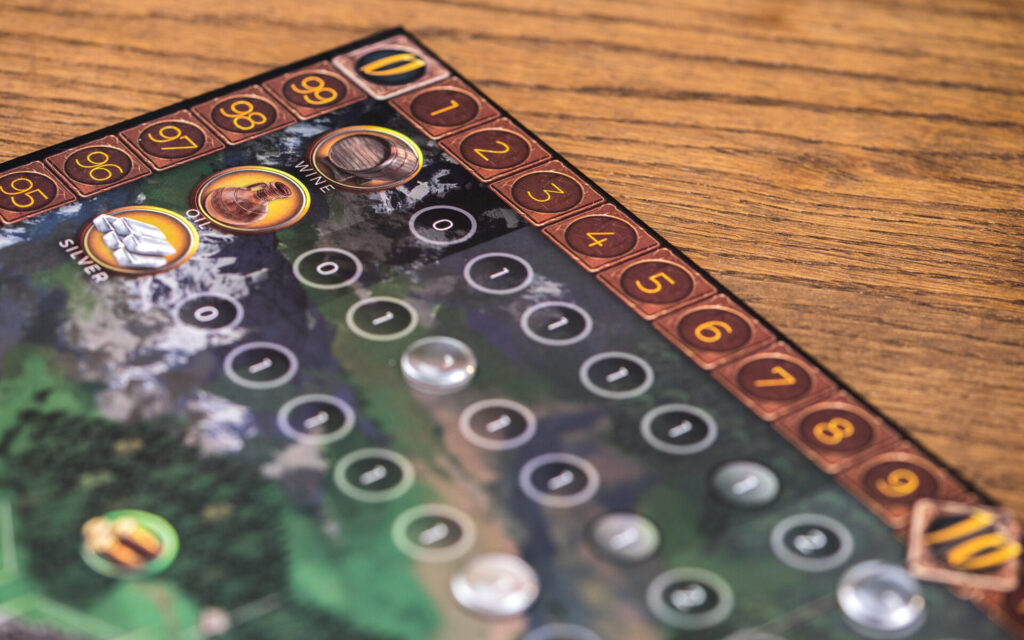
For a start, you need the resources to be able to build in a spot. Instead of collecting and spending units of the main resources in the game, in Ragusa you increase your production rate. The rates are tracked on little cards that get turned and flipped on your player board to keep track of how many you can use per turn. Some of the resources can be converted into goods to be traded, and you keep track of these with some cool little glass discs on that same player board.
The really tricky part when it comes to choosing where to place your little wooden buildings, is knowing that if you activate a hex, every other player with a building around that hex gets to take that same action after you. Add to that the fact that you get to do those actions once per building you own around that hex, and you can see there’s the potential to benefit everyone else more than yourself by taking your action. As you might imagine, this can lead to a lot agonising over decisions.
Choose your own adventure
Ragusa is another of the current crop of Euro games that offers a lot of different ways to win. When all’s said and done, the player with the most VPs wins, but there’s a lot of ways to get those VPs. It’s not my idea of a point salad, where scoring is all over the shop, but there are choices to make.
The Wharf and Market actions let you influence market prices and trade goods for luxury goods and VPs. It’s a really interesting little economy game that a lot of worker placements don’t do. If commerce doesn’t float your boat, you can choose to build towers and the city walls, to protect the city (which is now Dubrovnik, geography fans).
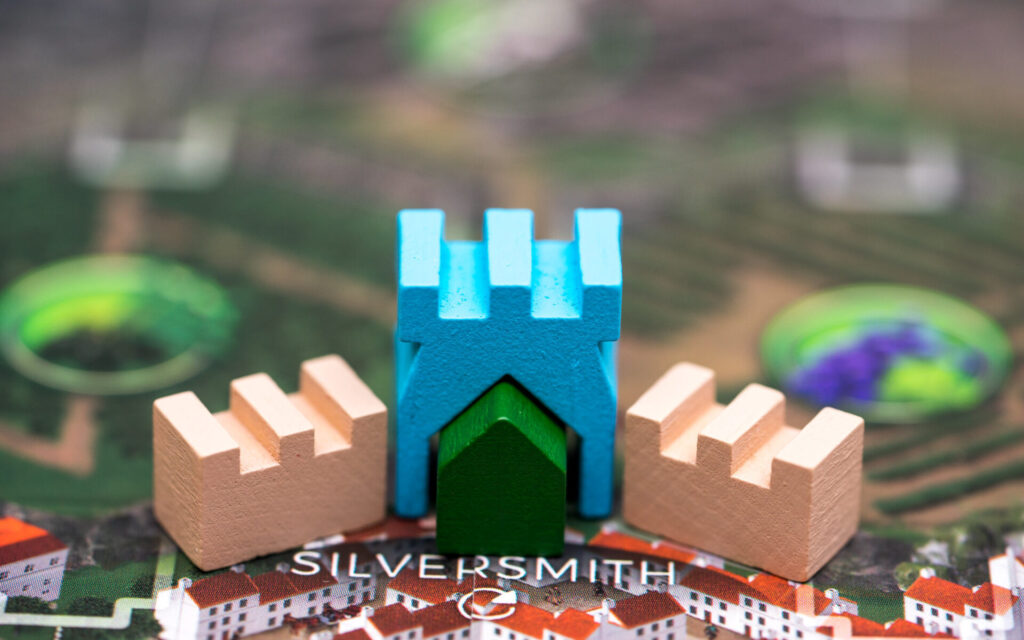
Players get their own secret bonus cards to score, based on what they’ve accomplished during the game. I really like these bonus cards, as they give players some direction, and it means even if you get squeezed out of a certain action’s area, there are still plenty of ways to win.
The astute among you might have noticed that I said at the top of the review that a turn is placing a building, and that each player has 12 buildings. You don’t have to be Carol Vorderman to realise that means you get 12 turns each. This means there are no unexpected endings, and every player knows exactly when the game will end. I love the drama of revealing your bonus cards at the end and watching hearts get broken as you overtake people who thought they had it in the bag.
First impressions count
Initially, Ragusa was an odd one for me. I pride myself on being able to understand a game pretty easily from the rule book, but I read and re-read the rules, and I tried a two-handed learning game, but I just could not get my head around it. I’m not sure why exactly, but I think some of it is around the lack of visual delineation on the game board. Using the standard side of the board, I found it very difficult to tell what was a country space, and what was a city space. The same goes for the line where the wall gets created, it’s just tricky to see at a glance. Luckily, if you flip the board over, all of these spaces are highlighted better.
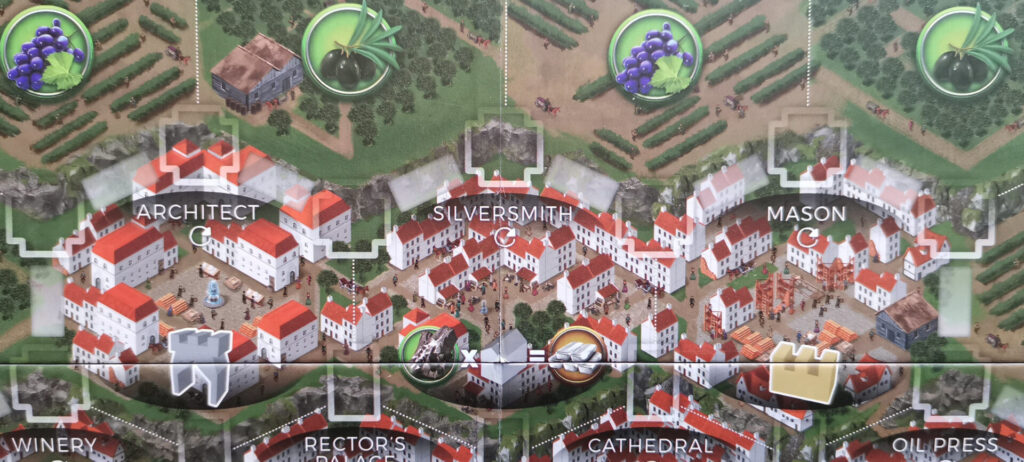
I’d strongly advise learning to play the game on the higher-contrast side for the first couple of games, then using the more aesthetically pleasing side when you’re happy.

The other trick is to get all thoughts of city-building out of your head. It’s a worker-placement game, with permanent placement. If you go into Ragusa with this in mind, it makes it all make more sense. Resource spaces are around the outside, actions spaces are in the middle. This ‘permanent placement with cumulative activation effects’ style of play will be immediately familiar with anyone who’s played Fabio’s more recent game, Merv.
The Patrician
Solo players will be pleased to know there’s a very fleshed-out solo game mode. It treats it as a three-player game, with you versus the powerful Patrician. He’s recently married into more money, and is using his in-laws’ cash and influence in addition to his own. That’s why you have two additional colours and player boards to operate, according to the rule book. If the thought of running two bots on top of your own turn is giving you headaches and palpitations, don’t worry. Bot turns are as simple as turning a card and seeing which spot to add a building to, then giving it its resources and actions as if it were a person.
The solo mode reserves a load of building spaces during the setup, so you know where they’ll be building, which is a little different to a normal game. In a way it’s pretty good though, as you can see where is available, and try to build a strategy around it. The bots are extremely well balanced. I played two full solo games just before sitting down to write this review, and my last game saw me win with 118, second place with 114, and third place with 110. Yeah, get me, solo flexing.
Final Thoughts
Let me start this summary by saying, I really like Ragusa. I think it’s a very good game, with great indirect interaction and lots of tricky decisions to make. With that out of the way, I can say that this was almost going to be a very different review for me. My first couple of plays just didn’t click for me. I found it complicated and unrewarding. BUT, it’s a game that gets better and better with subsequent plays.
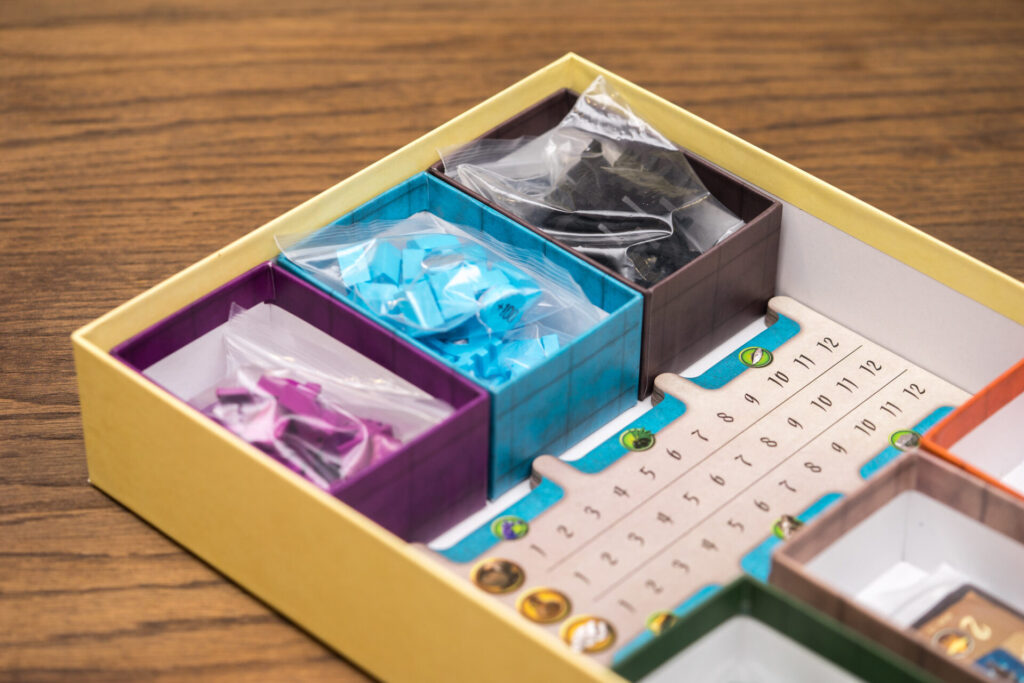
My initial worries were around the lack of variance in the setup. If I make the comparison with Merv again, in which every time the game is setup, the resource tile placements are completely random. In Ragusa, the action and resource spots are always in the same places. I didn’t like that at first, because it felt like every game had a set pattern. Your first placement always has to be a forest space, to get the wood you need to place that building, then you’ll get stone and try to claim an early city space, and so on. The more I play though, the more I realise that the permanent spots are a strength, not a weakness.
It doesn’t matter that the Silversmith (for example) is always in the same place, because there are six places around it to choose, and each of those will give you the benefit of two other hexes too. With random placement the grapes may have all ended up next to the winery, making those things very powerful and something to fight over. The way the game is designed though, this is impossible, and I really appreciate it now.
Personal space
The city feels very crowded at times. There are buildings, wall segments, and those cool little towers that straddle buildings, and they’re crammed in around the edge of the city. And then there are the names of the spaces, the iconography, and all of the illustrated buildings. There are a couple of building spaces where you almost can’t see the arrow which shows whether actions get triggered for everyone or not. It’s not a big deal when you’re used to it, but it can add to the difficulty when you first learn the game. You’ll find yourself peering under the towers to see what colour building is underneath to make sure everyone gets all the actions they’re entitled to.
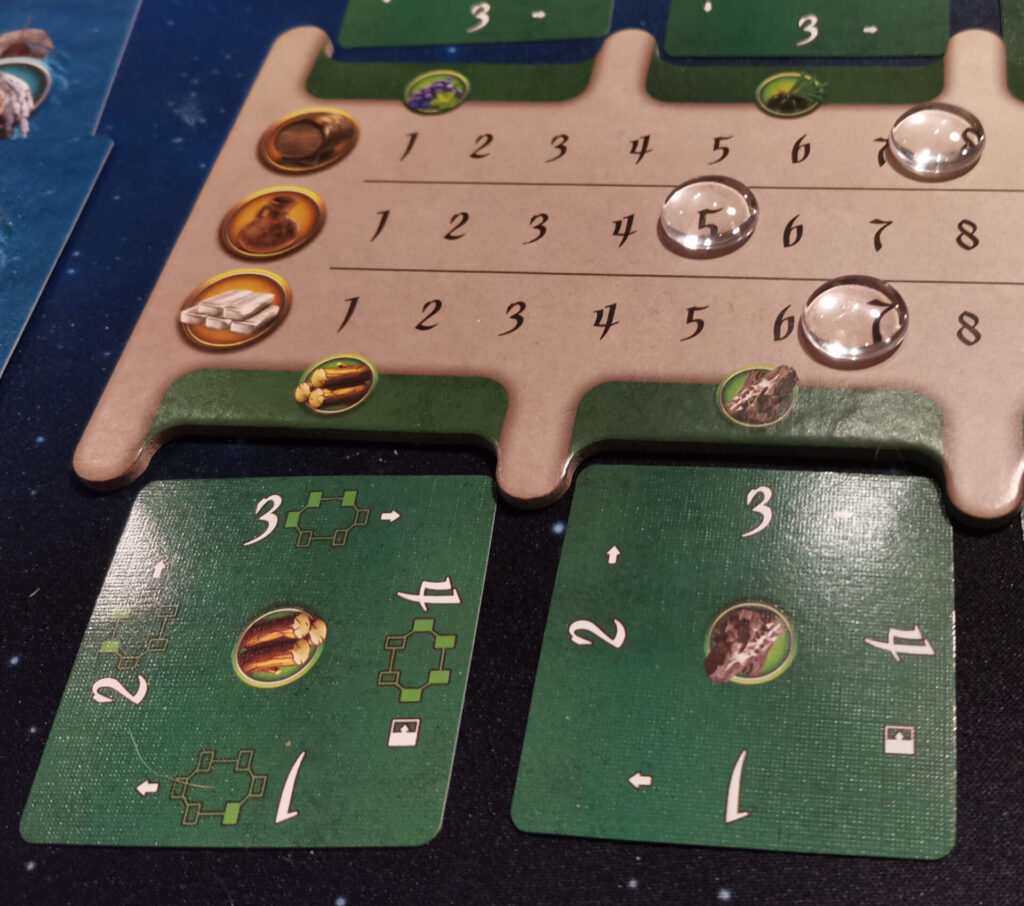
I recommend getting a learning play or two in, and maybe even showing new players a couple of example placements before you start the game proper. Even for me with a lot of experience with worker-placement, it still took me a few turns to get my head around. Once you understand it though, the game opens up and becomes a lot of fun. I’ve played games in the past where doing something might provide a benefit to someone as a side-effect, but never to this degree. It makes some of the choices you have to make really tricky, but it’s a fantastic mental tussle. Every time I’ve played it so far, I’ve enjoyed it a bit more than the previous time, and even just writing this paragraph now makes me want to open the box and set it up for another game. I think if you have a regular group Ragusa could get very competitive.
I really like how the game starts off slowly, and by the end, single placements trigger these avalanches of actions. The first couple of turns are simple, and you might get one or two things, but in those eleventh and twelfth turns you’re triggering so much stuff happening for so many people, and it’s enormously satisfying. I think Ragusa is most fun with three or four players, but I haven’t managed to get a five player game in yet.
If you’re after a worker-placement game that does things a little different, or you’re a fan of Fabio Lopiano’s other work, I think you’ll really enjoy Ragusa. As with Venice before, there’s a Tabletop Simulator mod right here, so you can try the game now.
Review copy kindly provided by Braincrack Games. Thoughts and opinions are my own.
Image credits
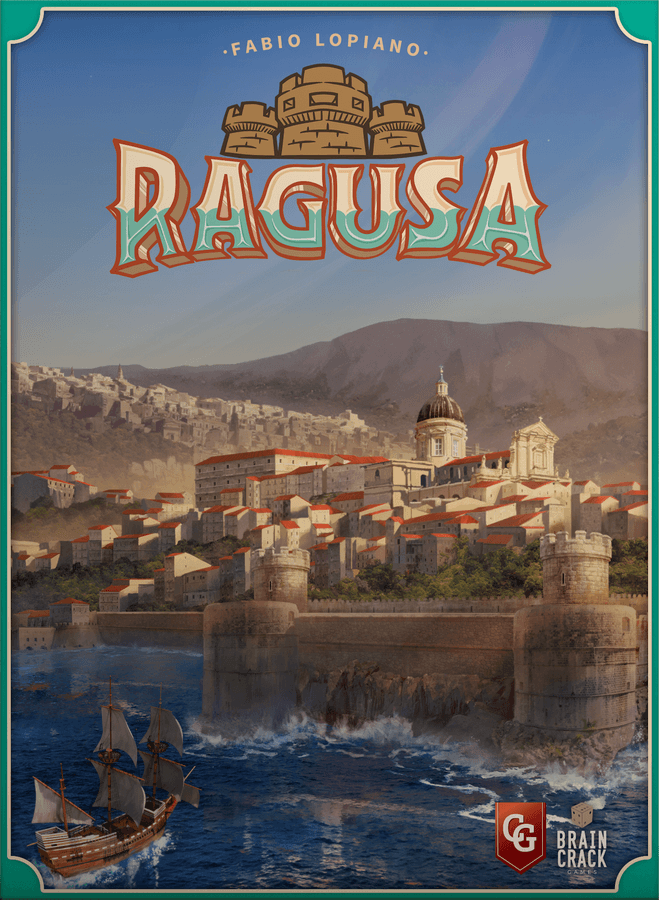
Ragusa (2019) – Braincrack Games
Designer: Fabio Lopiano
Publisher: Braincrack Games
Art: Bartlomiej Roczniak
Players: 1-5
Playing time: 45-90 minutes
